Habitat, Fauna and Flora > Habitat
The Reserve contains a considerable variety of habitats of community interest, all of which are identified and recognizable under the Habitats Directive 92/43/EEC.
The Reserve contains a considerable variety of habitats of community interest, all of which are identified and recognizable under the Habitats Directive 92/43/EEC.
Relevant is the presence of rare or endemic plants, as one climbs in altitude, up to the cacuminal areas of the elevations, the natural vegetation cover includes thickets, shrublands, scrub-forests with Olive trees, forests predominantly of Downy Oak (with which are associated Bagolaro, Chestnut, etc.), ilex groves (with Black Hornbeam, Mountain Maple, Holly, etc.) and rupicolous species. Particularly expressive in the cacuminal part of Mt. Scuderi are formations dominated by dwarf shrubs, often thorny and with pulvinate habitus, such as Astragalus siculus.
Equally important is the vegetation of the valleys, moreover great open-air geological laboratories, such as the "Fiumara di Fiumedinisi," "Torrente Vacco," due to the presence of Ranuncoli vegetation and, on the banks, of impenetrable riparian forests with galleries of Willow, Poplar, Eastern Platanus, etc.
A separate notation deserves the very numerous and showy flowering herbaceous plants, many of them endemic or rare, that embellish the environments of the Reserve, among them are the Gussone's Star, the Messina Violet, the Mutable Clover, several Orchids, etc.
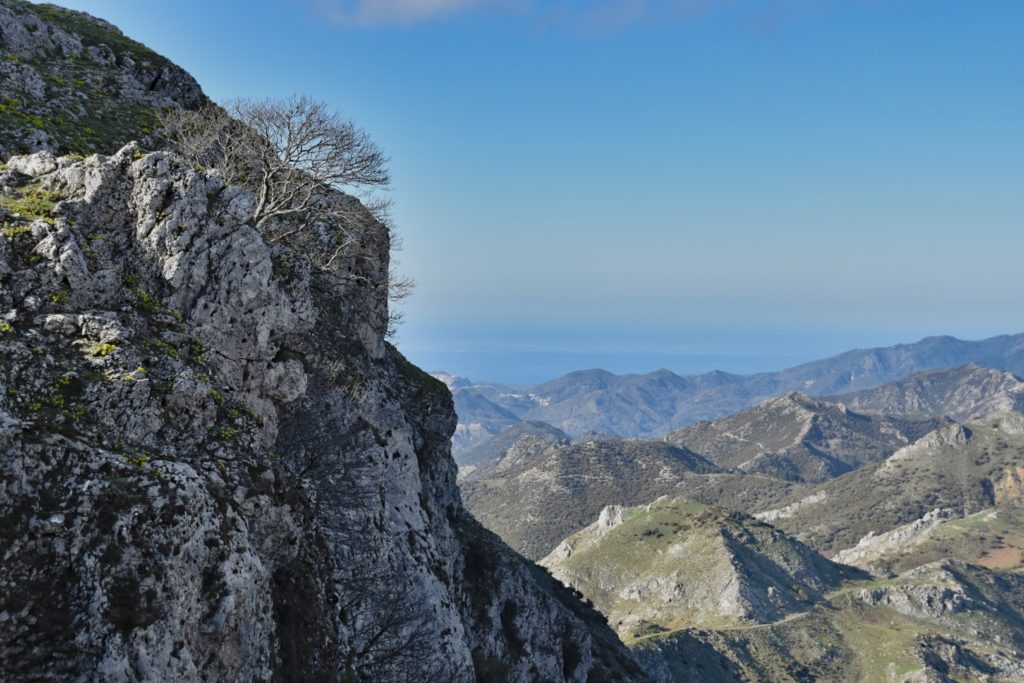
Relevant is the presence of rare or endemic plants, as you go up in altitude, up to the cacuminal areas of the elevations, the natural vegetation cover includes thickets, shrublands, scrub-forests with Olive trees, forests predominantly of Downy Oak (with which are associated Bagolaro, Chestnut, etc.), ilex groves (with Black Hornbeam, Mountain Maple, Holly, etc.), important rupicolous species. Particularly expressive in the cacuminal part of Mt. Scuderi are formations dominated by dwarf shrubs, often thorny and with pulvinate habitus, such as Astragalus siculus.
Equally important is the vegetation of the valleys, moreover great open-air geological laboratories, such as the “Fiumara di Fiumedinisi,” “Torrente Vacco,” due to the presence of Ranuncoli vegetation and, on the banks, of impenetrable riparian forests with galleries of Willow, Poplar, Eastern Platanus, etc.
A separate notation deserves the very numerous and showy flowering herbaceous plants, many of them endemic or rare, that embellish the environments of the Reserve, among them are the Gussone’s Star, the Messina Violet, the Mutable Clover, several Orchids, etc.
The Peloritani mountain range, deeply furrowed on both sides by wide alluvial valleys, where watercourses with a purely torrential regime flow together, stretches for about 65 km in a northeast-southwest direction, from Cape Peloro to the Nebrodi Mountains, with an endless succession of peaks, ridges and ravines. From a geological point of view, the Peloritani Mountains, which rose from the sea between the Mesozoic and Cenozoic (starting 225 million years ago), are part of a wide-ranging geological-structural context, the Calabrian-Peloritanian Arc, consisting of different stratigraphic-structural units; its peculiar rock and mineral composition reveals its geological origins, quite different from those of the other reliefs of the Island. Particularly relevant are the many and varied mineral deposits present, the very premise of the establishment of the Reserve. In the more than 160 mines, in fact, Copper, Zinc, Silver, Antimony, Iron, etc. were mined there.
Two areas of the Oriented Nature Reserve "Fiumedinisi and Monte Scuderi" are included in the regional list of Geosites, which is a list of territories with recognized scientific-environmental value, protected by specific regulations.
The two Geosites in the reserve are:
"
Polymetallic mineralization in the marbles and phyllites of the Mandanici Unit: area Torrenti Vacco-Santissima
" - of scientific interest mineralogy and classified with a world grade; the area falls in the municipality of Fiumedinisi, area: junction locality Vacco - Fiumara Santissima - Fiumedinisi Stream.
"
Waterfall of Vacco
" - of scientific geomorphological interest and classified with a degree of local interest; the area falls in the municipality of Nizza di Sicilia, locality: C.da Portella Funda.
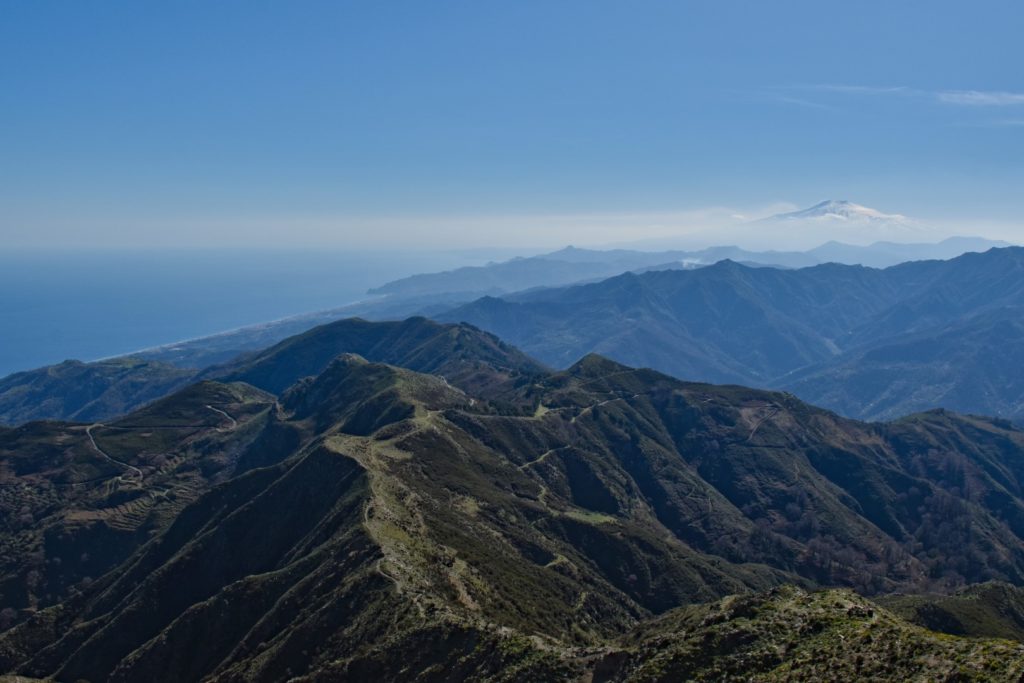
The Peloritani mountain range, deeply furrowed on both sides by wide alluvial valleys, where watercourses with a purely torrential regime flow together, stretches for about 65 km in a northeast-southwest direction, from Cape Peloro to the Nebrodi Mountains, with an endless succession of peaks, ridges and ravines.
From a geological point of view, the Peloritani Mountains, which rose from the sea between the Mesozoic and Cenozoic (starting 225 million years ago), are part of a wide-ranging geological-structural context, the Calabrian-Peloritanian Arc, consisting of different stratigraphic-structural units; its peculiar rock and mineral composition reveals its geological origins, quite different from those of the other reliefs of the Island.
Particularly relevant are the many and varied mineral deposits present, the very premise of the establishment of the Reserve. In the more than 160 mines, in fact, Copper, Zinc, Silver, Antimony, Iron, etc. were mined there.
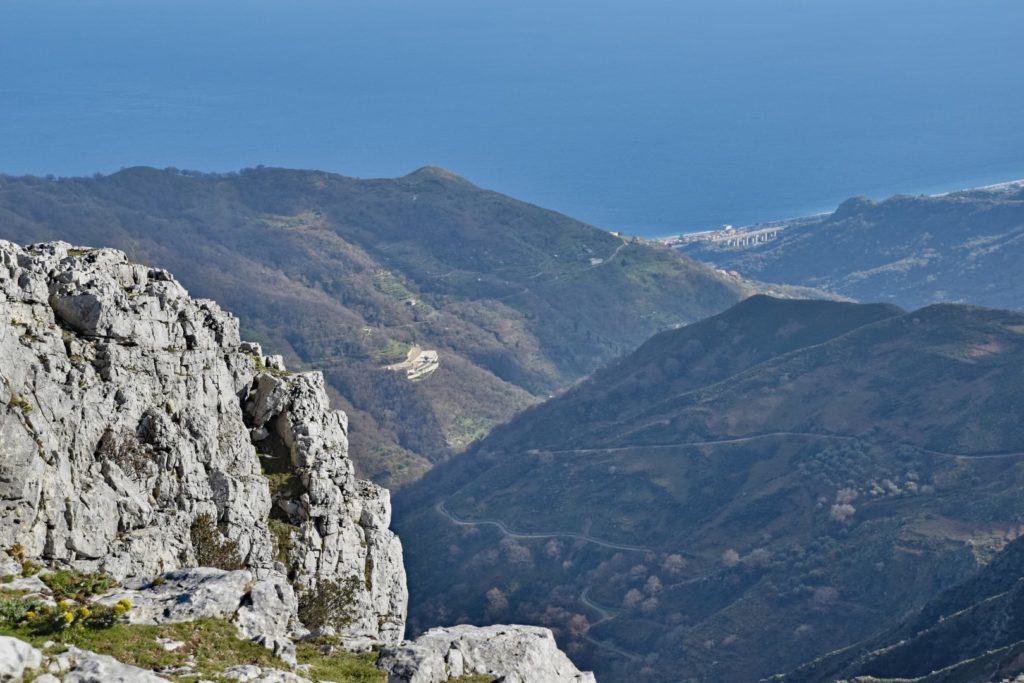
Two areas of the “Fiumedinisi and Monte Scuderi” Oriented Nature Reserve are included in the regional list of Geosites, which is a list of territories with recognized scientific-environmental value that are protected by specific regulations.
The two Geosites in the reserve are:
“Polymetallic mineralization in the marbles and phyllites of the Mandanici Unit: area Torrenti Vacco-Santissima“ – of scientific interest mineralogy and classified with a world grade; the area falls in the municipality of Fiumedinisi, area: junction locality Vacco – Fiumara Santissima – Fiumedinisi Stream.
“Waterfall of Vacco“ – of scientific geomorphological interest and classified with a degree of local interest; the area falls in the municipality of Nizza di Sicilia, locality: C.da Portella Funda.
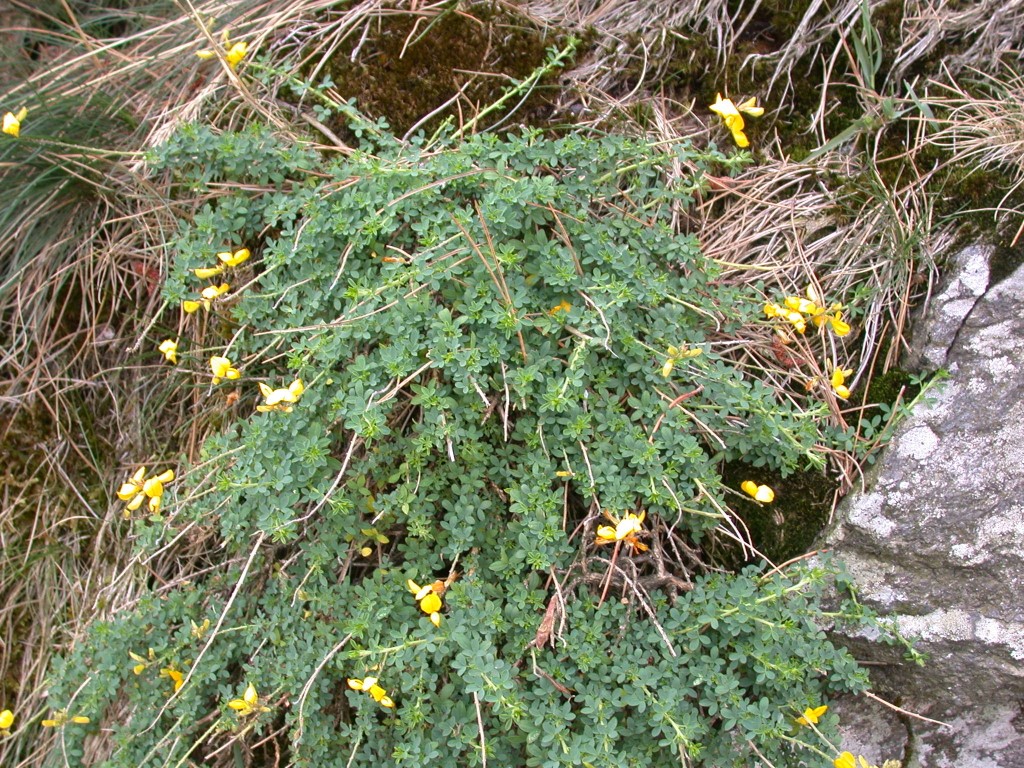
Descrizione – Formazioni a dominanza di Adenocarpus commutatus, Cytisus infestus, ecc., frammentariamente rappresentati sui Peloritani, diffusi soprattutto nel piano sub-montano e montano, dove costituiscono formazioni pioniere.
Distribuzione – Vegetazione diffusa oltre gli 800-850 m s.l.m. sugli affioramenti rocciosi cacuminali, soprattutto in ambiti particolarmente ventosi. Tende talora a diffondersi in ambienti secondari e sui pascoli, dove costituisce mantelli pre forestali a dominanza di Cytisus infestus, Erica arborea e Pteridium aquilinum.
Specie vegetali guida – Adenocarpus commutatus, Cytisus infestus, Erica arborea, Pteridium aquilinum, Cistus salvifolius, ecc.
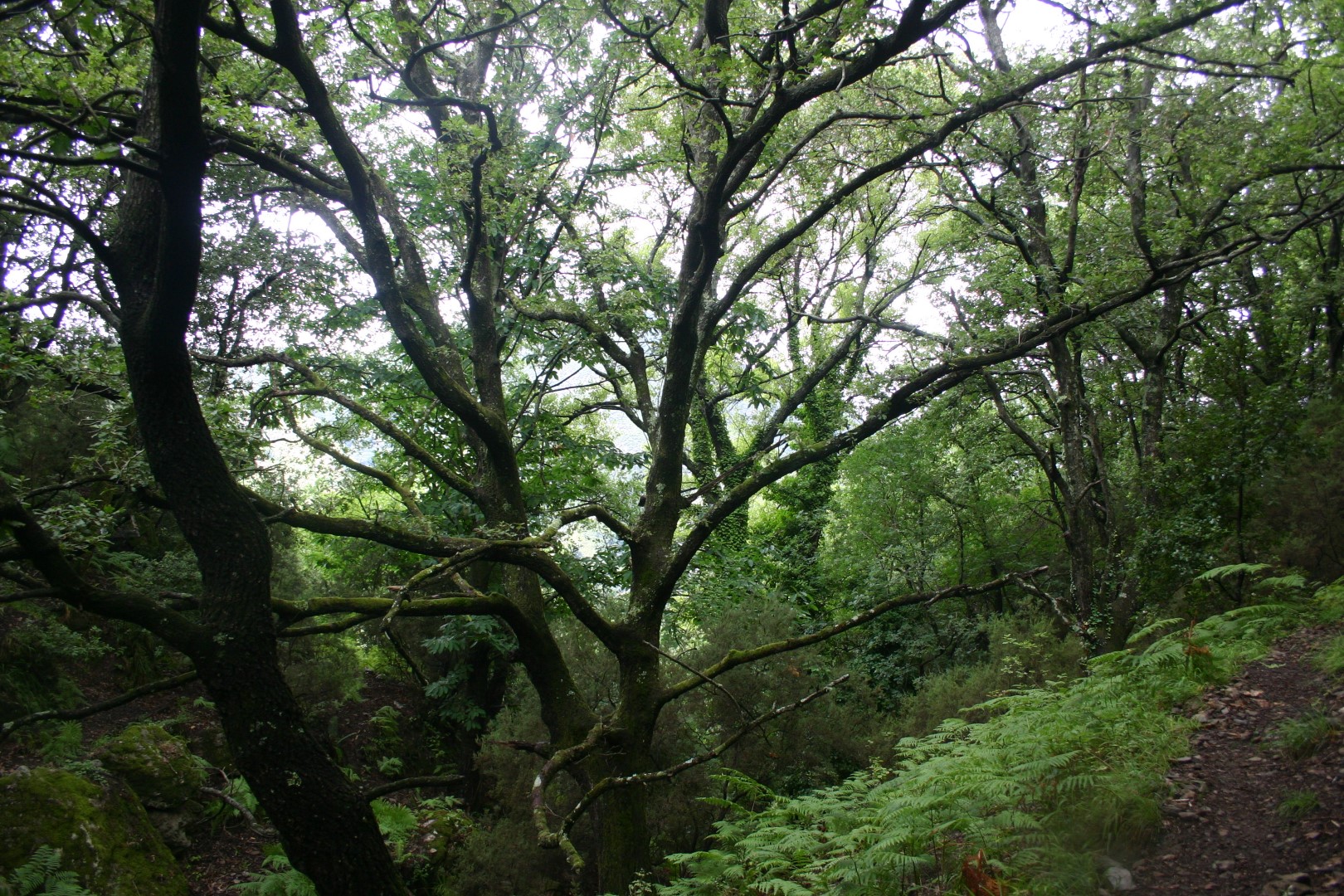
Descrizione – Formazioni dominate da diverse specie caducifoglie del ciclo di Quercus pubescens (Quercus virgiliana, Q. dalechampii, ecc.).
Distribuzione – Si sviluppano su suoli mediamente profondi, acidificati per dilavamento, dalla fascia costiera fino oltre 1300 m s.l.m., su pendenze non accentuate, spesso in mosaico con altre vegetazioni e i coltivi.
Specie vegetali guida – Quercus virgiliana, Olea europaea var. sylvestris, Pistacia lentiscus, Euphorbia dendroides, Ceratonia siliqua, Erica arborea.
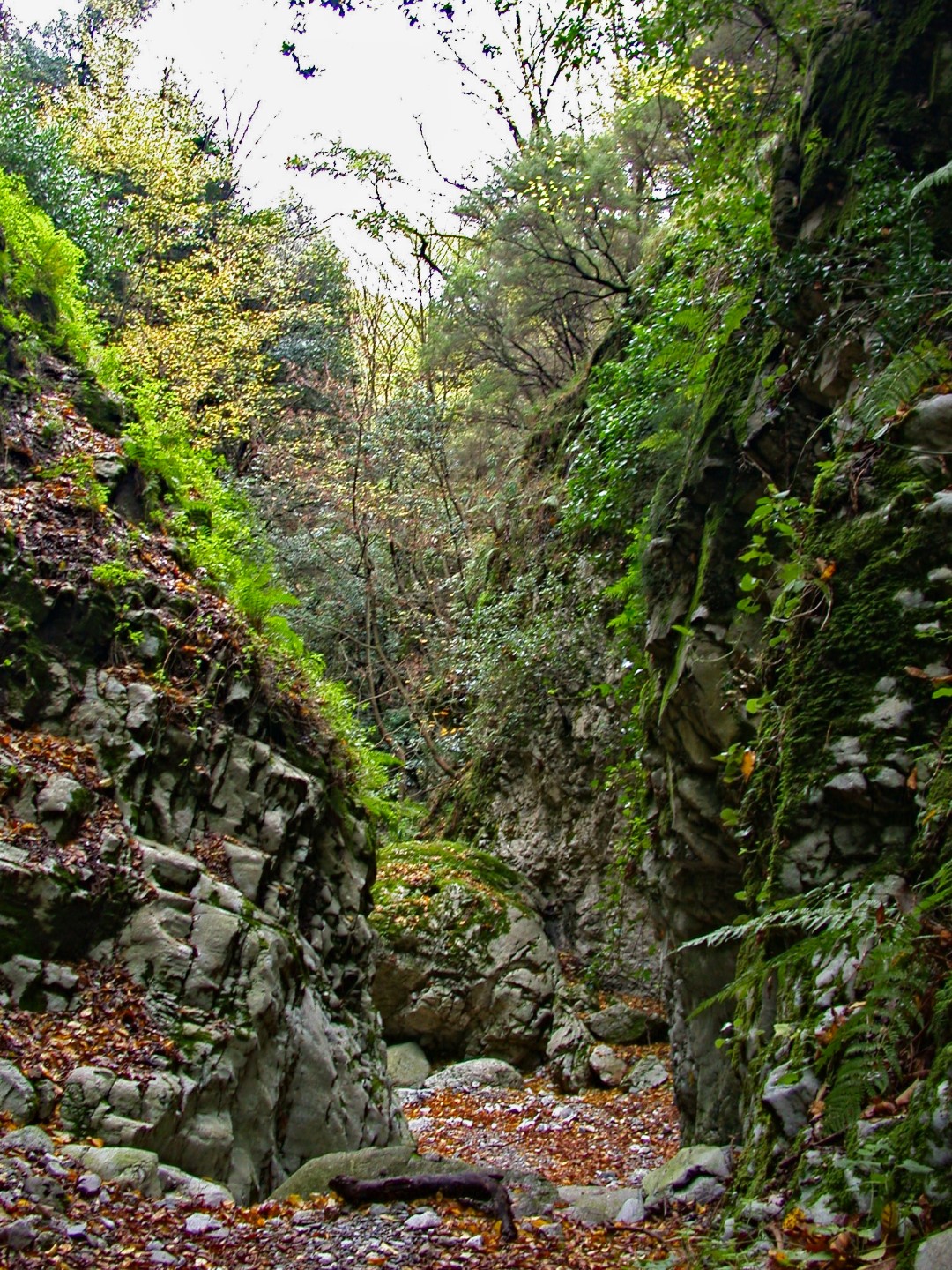
Descrizione – Habitat prioritario, in Sicilia segnalato per una sola stazione localizzata nell’area dei Peloritani. Colonizzato da boscaglie ricche in latifoglie che si sviluppano nelle forre e lungo i versanti montani freschi ed umidi, caratterizzati da un’elevata umidità atmosferica.
Distribuzione – L’habitat è circoscritto al “Torrente Niceto” e a due affluenti della “Fiumara Fiumedinisi” (Vallone della Santissima e Vallone del Soldato). Fra le principali specie forestali figurano Ostrya carpinifolia, Acer obtusatum, Fraxinus ornus, Tilia platyphyllos, ecc.
Specie vegetali guida – Ostrya carpinifolia, Acer obtusatum, Tilia platyphyllos e Laurus nobilis.
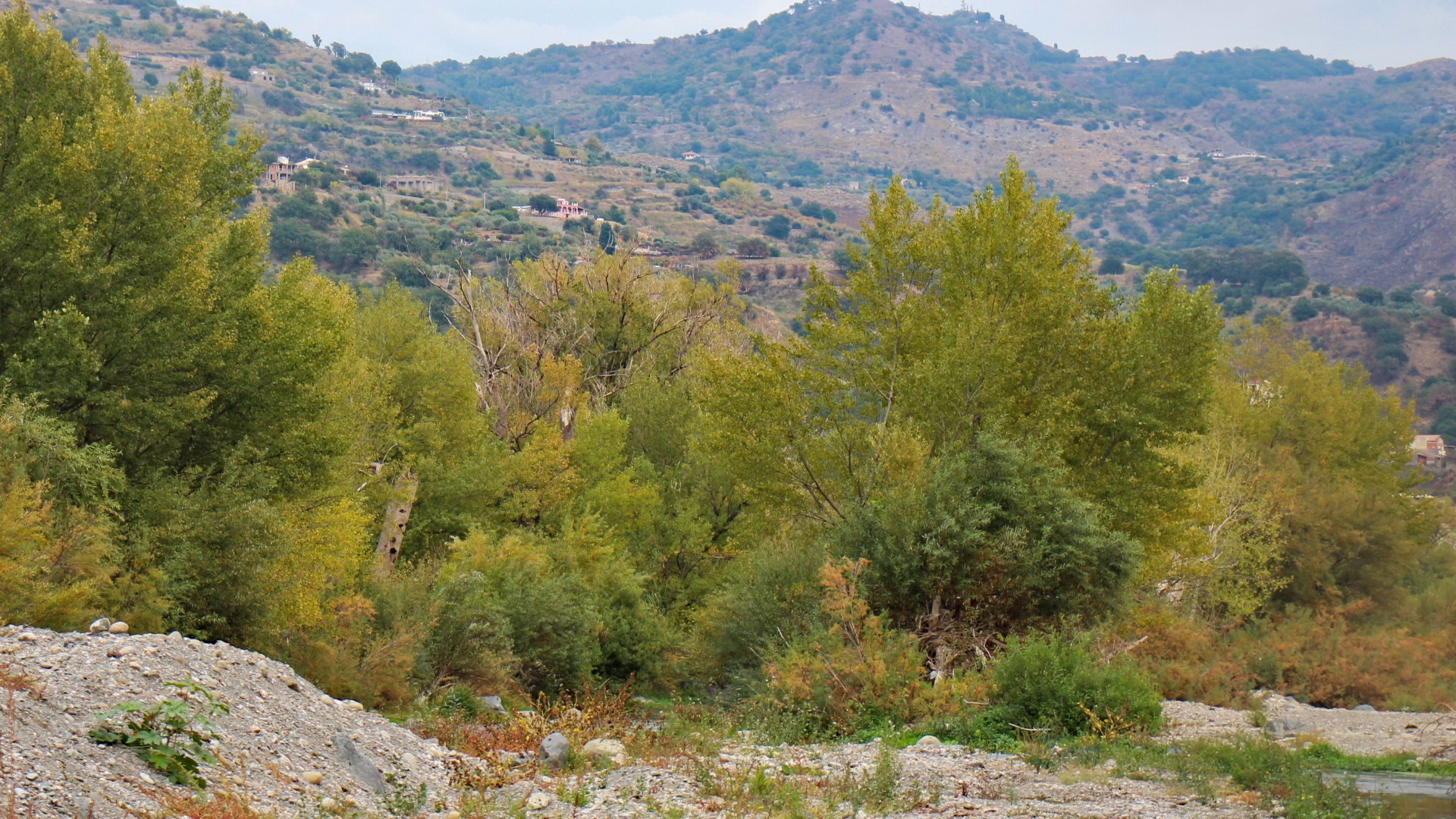
Descrizione – Ripisilva tendente a caratterizzare strette bordure lungo i corsi d’acqua, con uno strato arbustivo-arboreo costituito da Salix alba, S. purpurea, Populus nigra, ecc.
Distribuzione – L’habitat fa riferimento ad una vegetazione ripale tipica delle sponde di corsi d’acqua aperti, di natura argillosa o marnosa, umide.
Specie vegetali guida – Salix alba, Salix purpurea, Populus nigra.
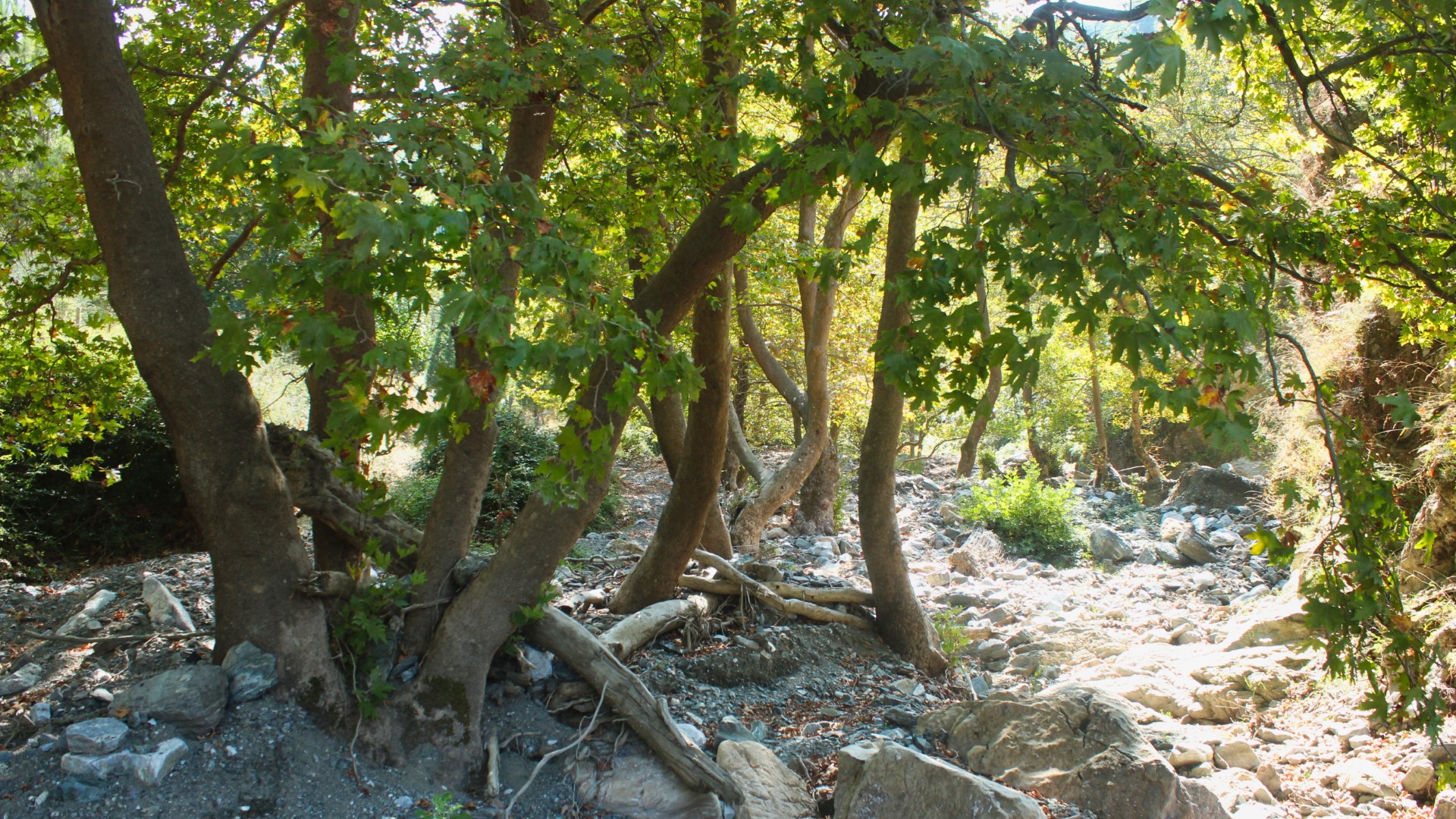
Descrizione – Habitat prioritario, espresso da una ripisilva molto ricca a Platanus orientalis cui si associa Salix gussonei endemica.
Distribuzione – L’habitat è rappresentato lungo alcuni corsi d’acqua dei Peloritani, dove costituisce l’aspetto più evoluto di una serie edafica a carattere igrofilo.
Specie vegetali guida – Platanus orientalis e Salix gussonei.
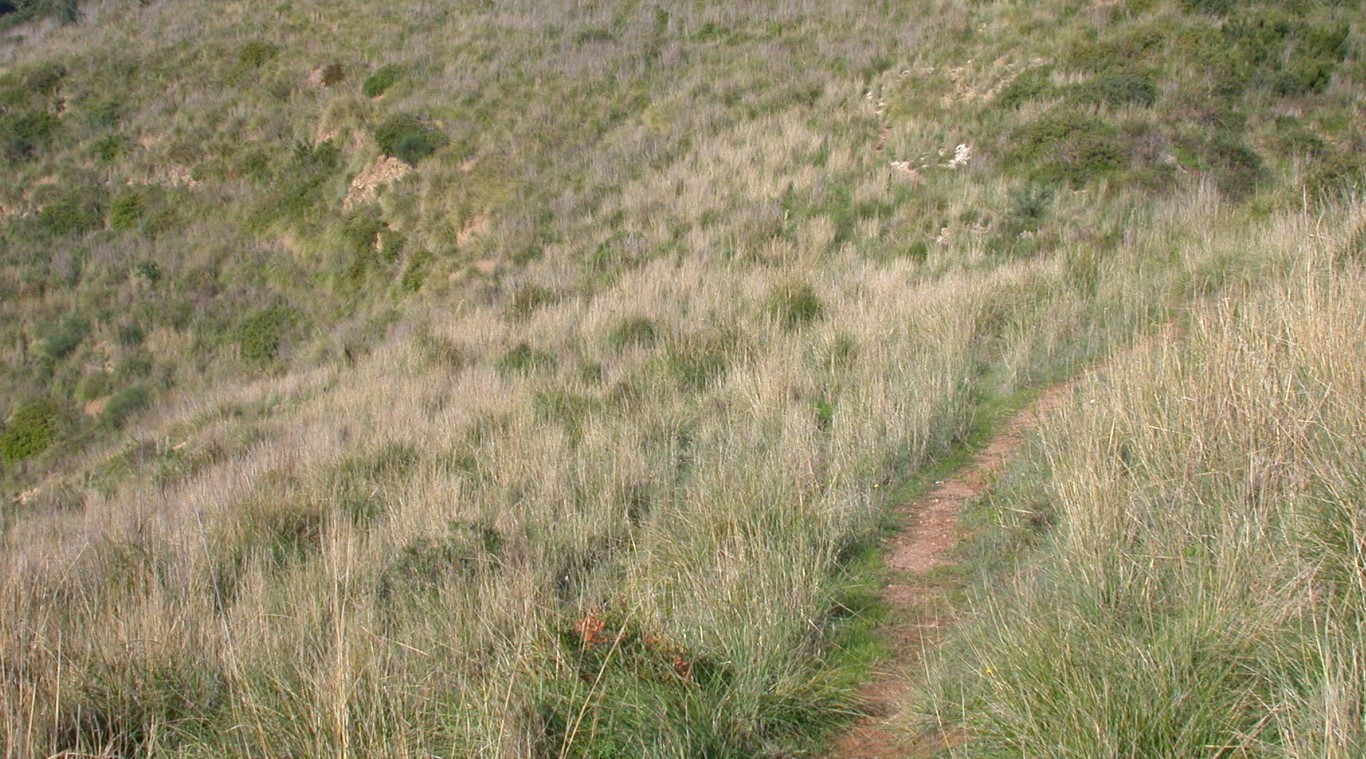
Descrizione – Habitat di interesse prioritario, raggruppa praterie xerofile piuttosto variabili per fisionomia e struttura: da quelle di piccola taglia a dominanza di varie specie di graminacee annuali a quelle perenni di taglia media a dominanza di Hyparrhenia hirta. Queste comunità si sviluppano su substrati di varia natura, generalmente con suoli diversificati (calcari, flysch, ecc.).
Distribuzione – Questo habitat è spesso a contatto con i coltivi, sviluppandosi a macchia di leopardo tra le formazioni arbustive (habitat 5330, 5332, ecc.)
Specie vegetali guida – Trachynia distachya, Tuberaria guttata, Stipa capensis, Vulpia ligustica, Sedum caeruleum, Sedum stellatum, Sedum rubens, Rumex bucephalophorus, Filago gallica, Trisetaria aurea, Aira cupaniana, Jasione montana, Tuberaria guttata, Trifolium arvense, ecc.

Description – Formations dominated by Adenocarpus commutatus, Cytisus infestus, etc., fragmentarily represented on the Peloritani, widespread mainly in the sub-mountainous and mountainous plane, where they constitute pioneer formations.
Distribution – Widespread vegetation above 800-850 m above sea level on cacuminal rocky outcrops, especially in particularly windy areas. It sometimes tends to spread in secondary environments and on pastures, where it forms preforest mantles dominated by Cytisus infestus, Erica arborea and Pteridium aquilinum.
Guide plant species-Adenocarpus commutatus, Cytisus infestus, Erica arborea, Pteridium aquilinum, Cistus salvifolius, etc.

Description – Formations dominated by several deciduous species of the Quercus pubescens cycle(Quercus virgiliana, Q. dalechampii, etc.).
Distribution-They grow on moderately deep soils, acidified by runoff, from the coastal strip to above 1300 m a.s.l., on unsevere slopes, often in mosaic with other vegetation and crops.
Guiding plant species – Quercus virgiliana, Olea europaea var. sylvestris, Pistacia lentiscus, Euphorbia dendroides, Ceratonia siliqua, Erica arborea.

Description – Priority habitat, in Sicily reported for a single station located in the Peloritani area. Colonized by broadleaf-rich thickets that develop in ravines and along cool, moist mountain slopes characterized by high atmospheric humidity.
Distribution – The habitat is confined to the “Torrente Niceto” and two tributaries of the “Fiumara Fiumedinisi” (Vallone della Santissima and Vallone del Soldato). Major forest species include Ostrya carpinifolia, Acer obtusatum, Fraxinus ornus, Tilia platyphyllos, etc.
Guiding plant species-Ostrya carpinifolia, Acer obtusatum, Tilia platyphyllos and Laurus nobilis.

Description – Ripisilva tending to characterize narrow borders along waterways, with a shrub-arboreal layer consisting of Salix alba, S. purpurea, Populus nigra, etc.
Distribution-The habitat refers to riparian vegetation typical of the banks of open, clayey or marly, wet streams.
Guiding plant species-Salix alba, Salix purpurea, Populus nigra.

Description – Priority habitat, expressed by a very rich ripisilva in Platanus orientalis to which endemic Salix gussonei is associated.
Distribution-The habitat is represented along some streams in the Peloritani Mountains, where it constitutes the most evolved aspect of an edaphic series of hygrophilous character.
Guiding plant species-Platanus orientalis and Salix gussonei.

Description – A habitat of priority interest, it groups xerophilous grasslands that are quite variable in physiognomy and structure: from small-sized grasslands dominated by various annual grass species to medium-sized perennial grasslands dominated by Hyparrhenia hirta. These communities develop on substrates of various kinds, usually with diverse soils (limestone, flysch, etc.).
Distribution-This habitat is often in contact with crops, developing in patches among shrub formations (habitats 5330, 5332, etc.).
Guide plant species-Trachynia distachya, Tuberaria guttata, Stipa capensis, Vulpia ligustica, Sedum caeruleum, Sedum stellatum, Sedum rubens, Rumex bucephalophorus, Filago gallica, Trisetaria aurea, Aira cupaniana, Jasione montana, Tuberaria guttata, Trifolium arvense, etc.